Mortar vs. Grout: How Are They Different? (With Pictures)
-
Jana Blagojevic
- Last updated:
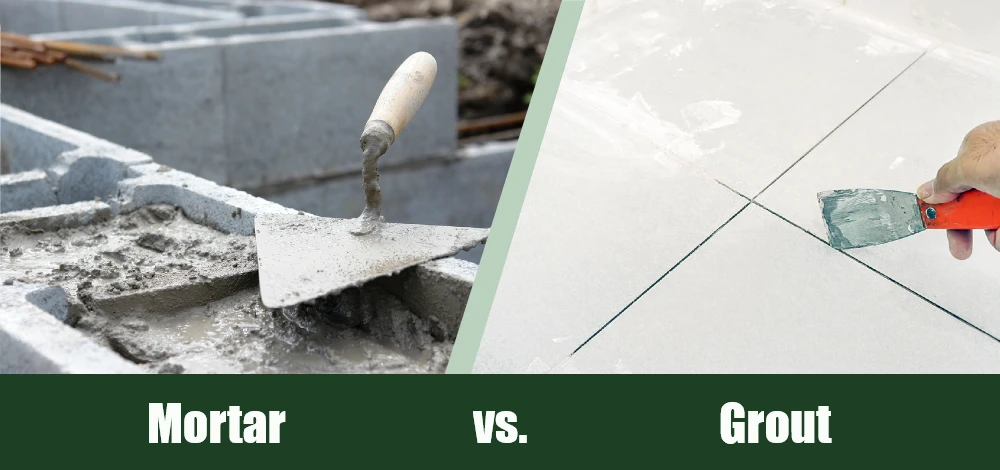
If you have tiles somewhere in your house or a brick centerpiece fireplace, chances are you are aware of the two materials that take all the credit—mortar and grout. While these two materials have several identical ingredients that go into making them, they have entirely different textures, purposes, and properties.
Continue reading the article below to find out some of the most prominent differences that make up these two materials.

At A Glance
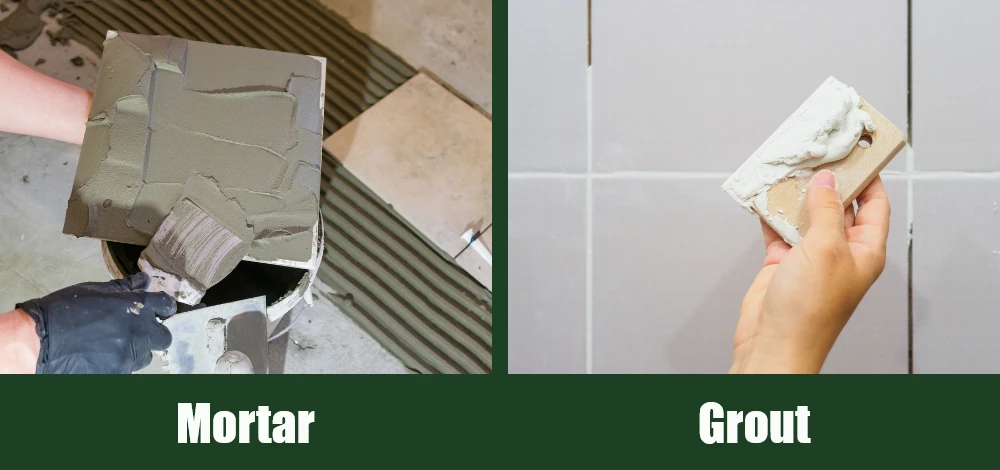
- Cement, lime, sand, water
- Stiffer than grout
- Has a very low viscosity
- Usually comes in the color of cement
- Applied with a trowel
- Cement, water, sand, polymer, epoxy resin
- Less stiff than mortar
- Has high viscosity
- Comes in various colors
- It cannot be applied with a trowel

Overview of Mortar:
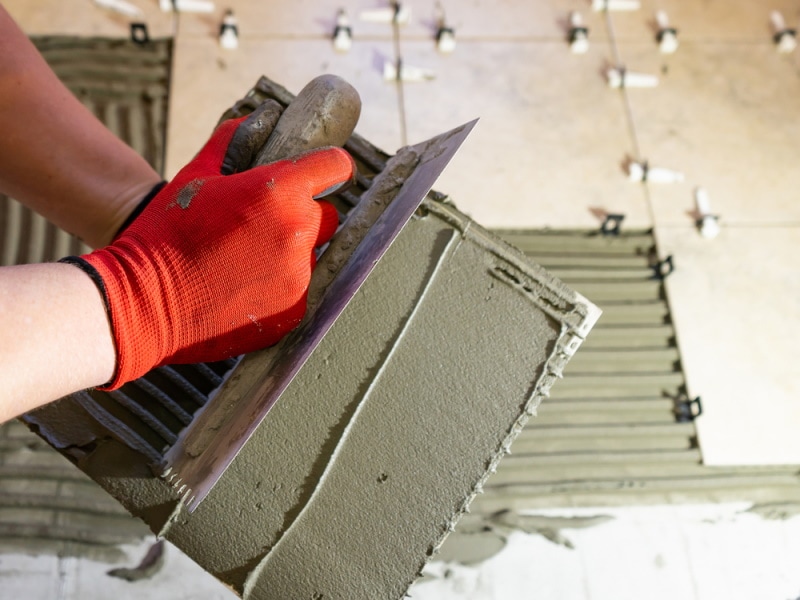
How It Works
Mortar is a structure comprised mostly of sand, cement, and water. It is a thick paste that is meant to bind two surfaces together. It contains a low water ratio compared to cement, making it easy to harden and create a strong water-resistant bond. Once mortar hardens, it is nearly impossible to penetrate or damage.
What It’s Used For
Mortar is usually used in the construction industry as a binding material between stones, concrete, and bricks. It is also a common material in home improvement projects because of its durability and strength. It is also commonly used as a bedding upon which tiles are installed. Mortar tends to have the addition of lime, which creates an even stronger bond with amazing benefits. Because of this high-quality bond, mortar has been used in the construction industry for many years.
Types of Mortar
- Type S Mortar: Used for tuck-pointing, mostly for laying bricks and stone.
- Type N Mortar: Used for most exterior structures and above-grade walls and has a wide general purpose.
- Type K Mortar: Used primarily for decorative structures and walls due to its soft texture.
- Type O Mortar: Has low compressive strength and is used mostly for indoor applications.
- Type M Mortar: Used mainly for foundations and heavy loads.
- Thinset Mortar: Used only as a bed for laying tiles on the floors and walls.
What It’s Made From
Mortar is usually a combination of cement, sand, water, and hydrated lime. The combination of these materials creates an incredibly strong and water-resistant bond that is perfect for laying bricks and stones. While mortar is strong, it falls victim to regular wear and tear. The main purpose of mortar is to keep bricks safe from any damage they may take over time, which is why mortar can easily be replaced after a few years.
- Inexpensive and easy to replace
- Durable and waterproof
- Useful for binding structures of brick, stone, or concrete
- Keeps bricks safe from damage
- Gets damaged or chipped over time
- Daily wear and tear can cause it to crack in certain places
Overview of Grout:
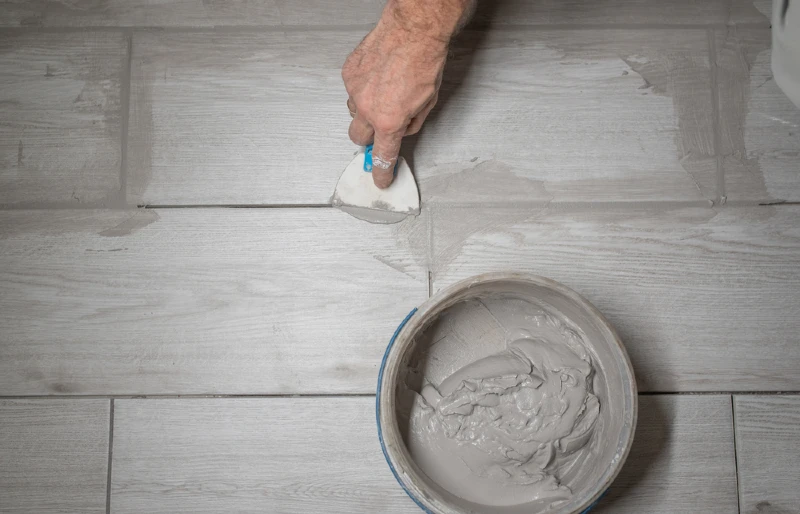
How It Works
Grout is a highly viscous material that is used mostly as a filler, holding tiles in place. Grout is a material that is used to fill up cracks and crevices surrounding the tiles and create a waterproof bond that will seal everything in place. Unlike mortar, grout is generally not used as an adhesive between two structures and simply has the strength to fill in any crevices and holes where water may seep in. Since grout is such a porous material, it is excellent at absorbing excess moisture and preventing it from reaching behind the tile work.
What It’s Used For
Unlike mortar, which is mostly used for connecting two materials, such as brick and concrete, grout is only used as a filler material between tiles. It is applied anywhere where you want to preserve your tiles and walls from excessive moisture and water, such as in kitchens and bathrooms. It also has use in strengthening the ground for a dam foundation.
Types of Grout
- Sanded Grout: Contains sand that makes the texture rougher and gritty, which is perfect for an enhanced bond.
- Unsanded Grout: Unsanded grout contains fine minerals instead of sand, making it have a much smoother texture compared to sanded grout.
- Epoxy Grout: Epoxy grout is entirely waterproof, doesn’t require sealing, and has no mineral content.
What It’s Made From
Grout is a mixture of cement, aggregate, and ingredients such as water or sand. Depending on which type of grout you decide to use, grout can be made using resins, creating a timeless bond that will resist any water damage. When making grout, manufacturers also use polymer for flexibility as well as some color pigments to change its appearance.
- Applied to prevent moisture from seeping into tiles
- Perfect for bathrooms and kitchens
- Epoxy grout is entirely waterproof
- Comes in various colors and styles
- Regular grout is not entirely waterproof
- Unsuitable when being used as an adhesive for two structures or materials
What Type of Mortar Do You Need?
If you are wondering what type of mortar you need, we can assume you are looking for personal use and not commercial. If you are looking for an easy-to-work-with mortar that will have the best strength and reliability, then the type N model is ideal for you. It is an ideal choice for general applications, and after around a month of drying, it can achieve a strength of 750 pounds per square inch.
While type O is usually used as an alternative to Type N, it has low structural capacity. It would be ideal for repointing and repairing the already existing structures.
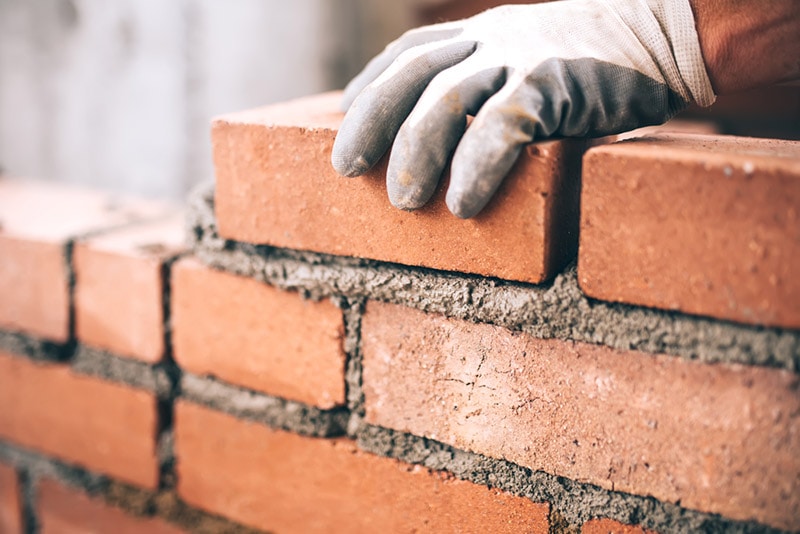
Are Both Mortar and Grout Waterproof?
Grout, especially the epoxy kind a porous waterproof material. While mortar is not waterproof, there are other useful products you can use to seal it and make the mortar water-resistant.
- To bond materials in brick, cement, and stone masonry
- In plastering, to hide joints
- For bedding beneath tiles
- For filling crevices and holes between tile work
- To avoid cracks in weak areas
- To strengthen the ground for the dam foundation
Conclusion
Mortar and grout are two very similar yet different materials that have their own important purposes. While it may seem like these two materials are used for one purpose and are often used together, they have entirely different properties, especially when it comes to being water-resistant.
- Related Read: Mortar vs. Stucco: What’s the Difference?
Featured Image Credit: Left – Mortar (pryzmat, Shutterstock) | Right – Grout (Oasishifi, Shutterstock)
Contents


